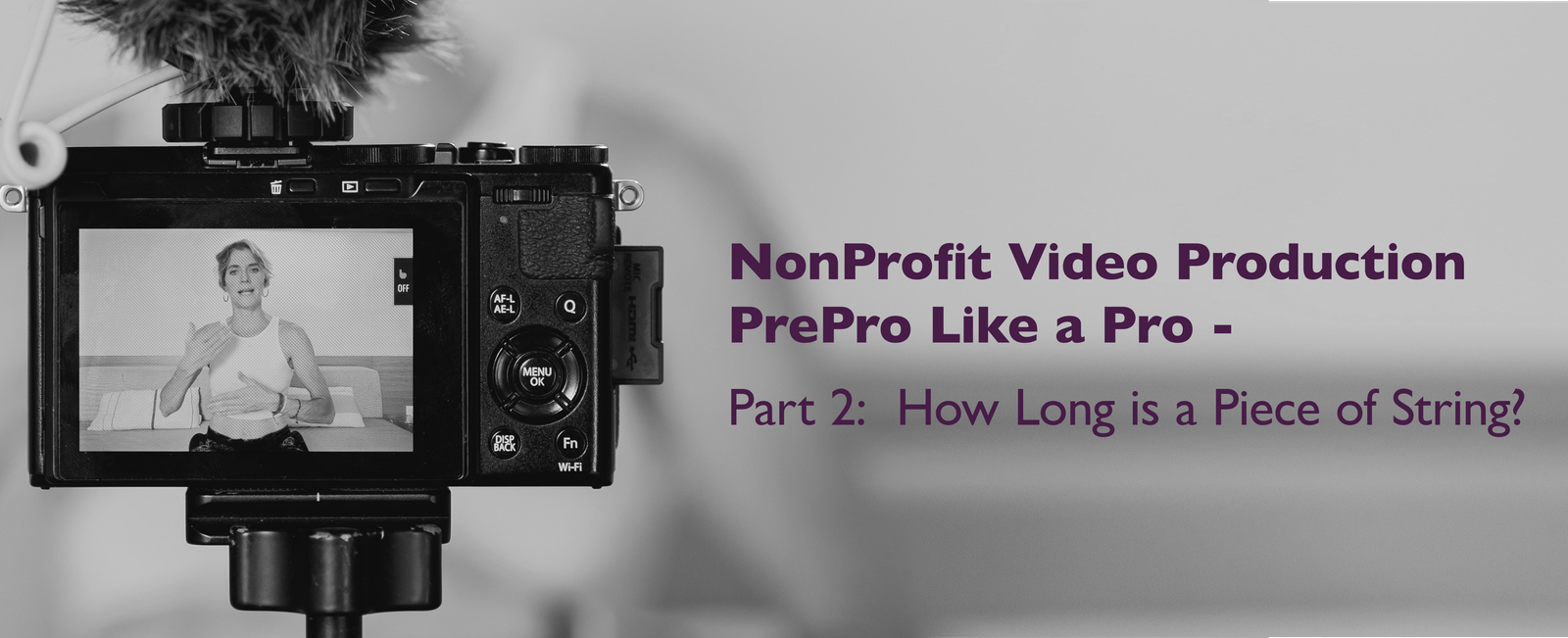In which we discuss working with an independent producer, a production company or an agency. What your production will need, and how much it will cost.

I hesitated on if part 2 should focus on working with a producer and determining the scope of your production or if part 2 should be creative development (my favourite part). They are both so interconnected it is difficult to separate them, but they are also very different. I imagine that if you are going to hire a producer/director/creator, they will be collaborating or solely responsible for the creative development. At least this is the case with my clients. So I decided to start here.
Should you hire an agency, a production company of freelance producer?
When you first decide to make a video you may be considering should questions such as ‘Should we hire a production company, an agency, or an independent/freelance producer (like me)?’ The answer is – it depends. If you are a national non-profit and your marketing budget is in the millions – go with your (AOR) agency of record, you may even be obligated to use your agency. If you don’t have an agency but your marketing budget is still in the hundreds of thousands, go with a prod-co (production company). It will be more expensive than hiring an indy-producer but they will have access to larger crews and relationships with post-production houses. If however, your annual marketing budget is under $100K – you probably want to bring someone like me in. Smaller crews, and lower budget productions. If your annual budget is less than $50K you probably need to get super crafty and creative – you may still want to bring in someone like me, but it is going to be a streamlined low-budget production by a preditor (producer/shooter/director/editor). These productions take longer and need to be simple because it might be a one to three-person crew doing a lot of jobs.
Whichever way you are going you will want to look at the reels of the indy producer or the production company. It’s important when looking at reels that you also ask what the budget was – and what roles were filled by the key creative you are considering. It’s no good if they show you a spot that cost 500K plus to produce and they were a production assistant. You need to compare apples to apples as much as you can.
How much is producing a video going to cost?
The question most new clients ask me first is ‘How much is a video going to cost?’ I always think back to what the first producer who hired me as their junior taught me ‘How long is a piece of string?’ The fact is that the cost of production depends on the production. Are we shooting in your office in Vancouver, or flying the crew to Venice and closing St Marco’s Square to tourists for 3 days? Do we need a big crew to pull off the creative idea, or can we do this with a skeleton crew? Are we prepared to brown bag lunch or do we need catering? It is perfectly acceptable to say to a producer, we only have $25,000 (or whatever your budget is) to spend on this video and see what they come back with.
You will want to share your max budget, why you want to make the video, who you are making it for, and where they will watch it with the producer/director so they can develop the best creative. (Learn more about answering these questions yourself in ‘Should You Make a Video?’
At this point if you do not pay for development the producer will come back with a stock quote on how many days of shooting and editing they can get for your budget, They may say 1-2 days of interviews with 1 day of supplementary shooting on location, or something like this. It is standard practice to quote for free. I think it is better to put up a small amount of money and ask for some development along with the quote, trust me, this will save money in the long run. Ask what their fee would be for a day or two of development. It may cost money upfront but could save thousands in production costs, and make the video exponentially more successful.
This conversation may go something like this:
You: I have $15K, can you make a fund-raising video for my dog rescue, we need to raise $85K to build dog kennels, we want to host the video on YouTube and promote it to our newsletter subscribers and on Instagram. People will probably watch this on their commute so we think it needs to be short and snappy.
ME: I think I can hit that target, but I would you to commit $1000 to development first. I will come out and spend a day at the rescue, and talk to you and any staff/volunteers that are available. Then I will spend some time sketching a couple of creative concepts that will fit your budget, then you can pick one and I will pull a quote together for $14K.
You may be thinking why would you spend $1000 and not know if you want to proceed, but it’s better than signing a contract on the whole sum and then not liking the creative concepts, losing your deposit or committing to creative you aren’t 100% on board with. If you don’t like the creative that was developed for $1000, you can work back and forth until you are happy with it, or you can walk away and save your production money. Worst case you can share the development with the next producer as an example of what you don’t want. Essentially engaging the producer for creative development will save time and money in production, AND your video will be a much better fit for your needs.
If you want the producer to deliver a finished video (as opposed to just the footage). The quote from the producer should cover all the production and post-production costs. Depending on your budget this may include:

Many other costs could be involved, but these are typical for low-budget videos that non-profits need.
What determine budget?
Some of the factors that will determine the production budget are the number of locations you need to shoot in, the amount of equipment you need to rent, and the number of crew you need to pull off the production. But, don’t cheap out on things that you think are unimportant, ask your producer if you have queries. For example, hair and make-up might cost $250-$500 per day for non-profit work and you may be tempted to think ‘Nah they can do their hair themselves’. Not only is make-up for film a little different, there is continuity to think about, and the psychological benefit of having someone else do it. Non-profit and corporate videos are an excellent place for recent grads to get experience as the makeup is often basic — but they still need to be paid fairly for their work and they still have hard costs such as make-up to cover.
So what does creative development look like? And how can you provide information to the producer to give them the best chance of developing powerful creative? We will cover Creative Development in Part 3: The Most Important Part.



No responses yet